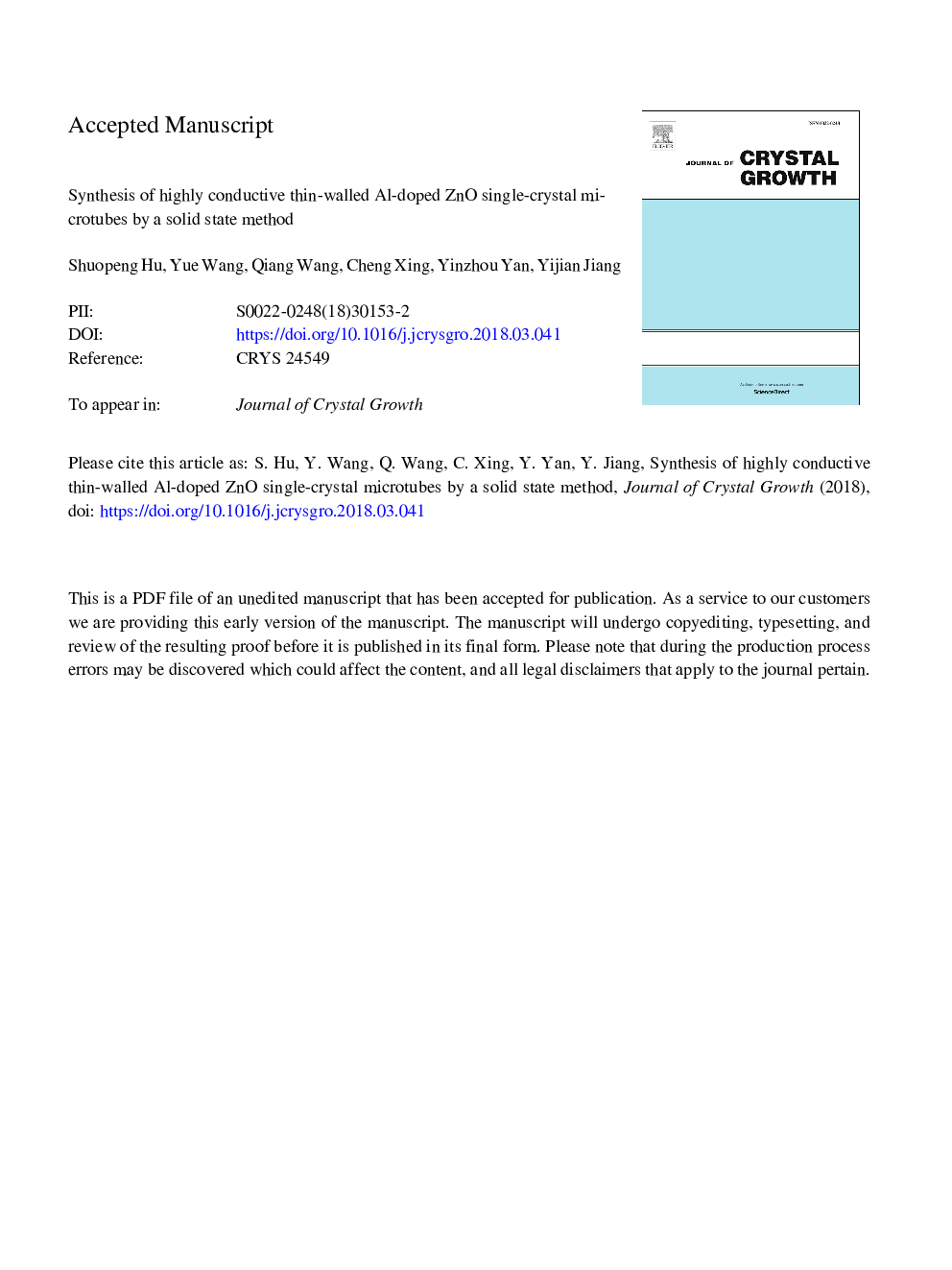| Article ID | Journal | Published Year | Pages | File Type |
|---|---|---|---|---|
| 8148548 | Journal of Crystal Growth | 2018 | 18 Pages |
Abstract
ZnO has attracted considerable attention in fundamental studies and practical applications for the past decade due to its outstanding performance in gas sensing, photocatalytic degradation, light harvesting, UV-light emitting/lasing, etc. The large-sized thin-walled ZnO (TW-ZnO) microtube with stable and rich VZn-related acceptors grown by optical vapor supersaturated precipitation (OVSP) is a novel multifunctional optoelectronic material. Unfortunately, the OVSP cannot achieve doping due to the vapor growth process. To obtain doped TW-ZnO microtubes, a solid state method is introduced in this work to achieve thin-walled Al-doping ZnO (TW-ZnO:Al) microtubes with high electrical conductivity. The morphology and microstructures of ZnO:Al microtubes are similar to undoped ones. The Al3+ ions are confirmed to substitute Zn2+ sites and Zn(0/â1) vacancies in the lattice of ZnO by EDS, XRD, Raman and temperature-dependent photoluminescence analyses. The Al dopant acting as a donor level offers massive free electrons to increase the carrier concentrations. The resistivity of the ZnO:Al microtube is reduced down to â¼10â3â¯Î©Â·cm, which is one order of magnitude lower than that of the undoped microtube. The present work provides a simple way to achieve doped ZnO tubular components for potential device applications in optoelectronics.
Related Topics
Physical Sciences and Engineering
Physics and Astronomy
Condensed Matter Physics
Authors
Shuopeng Hu, Yue Wang, Qiang Wang, Cheng Xing, Yinzhou Yan, Yijian Jiang,
